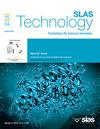Application of high-resolution magnetic resonance imaging (MRI) in the evaluation of acupuncture effects in traditional Chinese medicine
IF 3.7
4区 医学
Q3 BIOCHEMICAL RESEARCH METHODS
引用次数: 0
Abstract
In the evaluation of acupuncture effects in traditional Chinese medicine (TCM), the unclear interpretation of microscopic mechanisms and the difficulty in verifying acupoint specificity due to insufficient resolution of MRI (Magnetic Resonance Imaging) are the main reasons for the difficulty. This paper adopts 7T ultra-high field MRI combined with dynamic ASL (arterial spin labeling) technology, taking advantage of its high spatial resolution and quantitative blood perfusion imaging, to achieve dynamic visualization of microcirculation at acupuncture points in patients with ulcerative colitis. Ulcerative colitis is an ideal site to verify the feasibility of this method because its lesion site is clear and easy to correspond with the body surface acupoint. This paper establishes a high-resolution imaging protocol based on 7T magnetic resonance imaging, adopts 0.5mm spatial resolution, and optimizes scanning parameters to adapt to the microstructural imaging requirements of the acupoint area. This paper introduces pCASL (pseudo-continuous arterial spin labeling) technology, sets the labeling duration and perfusion delay time, captures the changes in perfusion volume before and after acupuncture over time, and obtains a dynamic perfusion sequence. This paper adopts umbilical moxibustion therapy, selects specific meridian acupoints, sets a standard acupuncture stimulation scheme (needle insertion depth, frequency, and needle retention time), and simultaneously performs MRI scanning to achieve real-time acupuncture imaging acquisition. The acquired multi-time point images can be rigidly registered and mapped with standard templates, the blood flow intensity change curve of the acupuncture-related area can be extracted, and the time-perfusion function can be constructed to analyze the local response pattern. The experimental results show that the ΔCBF (Delta Cerebral Blood Flow) of 7T-ASL at Shenque, Tianshu and Zhongwan are 0.15, 0.12 and 0.18 respectively, and it has high sensitivity in capturing tiny blood flow changes under sub-millimeter resolution. The SNR (Signal-to-Noise Ratio) at Shenque, Tianshu and Zhongwan are 22, 25 and 24 respectively, and the CNR (Contrast-to-Noise Ratio) is 6.2, 6.5 and 6.7 respectively, which has significant advantages in the spatial identification of sensitive areas of neural regulation and the identification of perfusion response. The average rising rate, peak time and recovery time in all acupoints were 2.44%/s, 7.2s and 11.5s respectively, and the acupuncture effect took effect faster in local areas.
高分辨率磁共振成像(MRI)在中医针灸疗效评价中的应用。
在中医针灸疗效评价中,显微机制解释不清,且由于MRI(磁共振成像)分辨率不够难以验证穴位特异性,是造成评价困难的主要原因。本文采用7T超高场MRI结合动态ASL(动脉自旋标记)技术,利用其高空间分辨率和定量血液灌注成像的优势,实现溃疡性结肠炎患者穴位微循环的动态可视化。溃疡性结肠炎因其病变部位清晰,易于与体表穴位对应,是验证该方法可行性的理想部位。本文建立了基于7T磁共振成像的高分辨率成像方案,采用0.5mm空间分辨率,并优化扫描参数,以适应穴位区域的微结构成像要求。本文引入pCASL(伪连续动脉自旋标记)技术,设置标记时间和灌注延迟时间,捕捉针刺前后灌注量随时间的变化,得到动态灌注序列。本文采用脐灸疗法,选择特定经络穴位,设定标准针刺刺激方案(插针深度、频率、留针时间),同时进行MRI扫描,实现实时针刺成像采集。对获取的多时间点图像进行严格配准和标准模板映射,提取针灸相关区域血流强度变化曲线,构建时间灌注函数分析局部反应模式。实验结果表明,7T-ASL在神雀、天树和中湾的ΔCBF (Delta Cerebral Blood Flow)分别为0.15、0.12和0.18,在亚毫米分辨率下对微小血流变化的捕捉具有很高的灵敏度。神雀、天树和中湾的信噪比分别为22、25和24,CNR分别为6.2、6.5和6.7,在神经调节敏感区域的空间识别和灌注反应识别方面具有显著优势。各穴位的平均上升速率、峰值时间和恢复时间分别为2.44%/s、7.2s和11.5s,局部见效较快。
本文章由计算机程序翻译,如有差异,请以英文原文为准。
求助全文
约1分钟内获得全文
求助全文
来源期刊

SLAS Technology
Computer Science-Computer Science Applications
CiteScore
6.30
自引率
7.40%
发文量
47
审稿时长
106 days
期刊介绍:
SLAS Technology emphasizes scientific and technical advances that enable and improve life sciences research and development; drug-delivery; diagnostics; biomedical and molecular imaging; and personalized and precision medicine. This includes high-throughput and other laboratory automation technologies; micro/nanotechnologies; analytical, separation and quantitative techniques; synthetic chemistry and biology; informatics (data analysis, statistics, bio, genomic and chemoinformatics); and more.
 求助内容:
求助内容: 应助结果提醒方式:
应助结果提醒方式:


